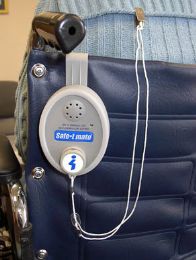
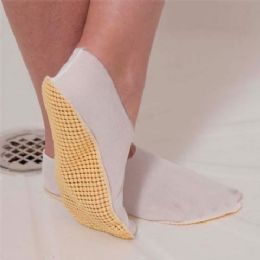
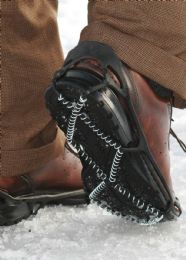
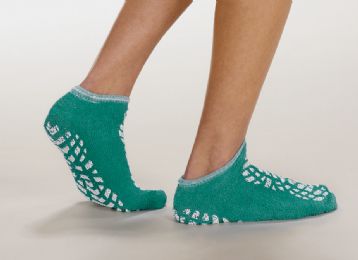
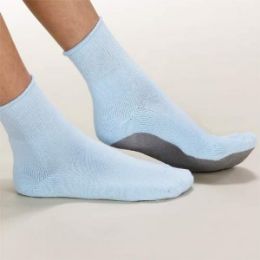
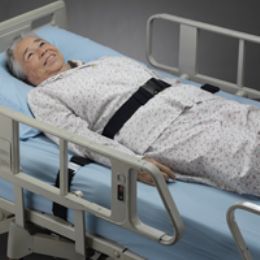
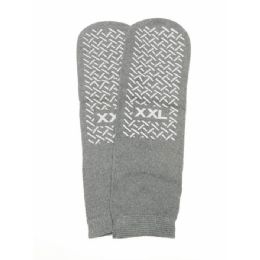
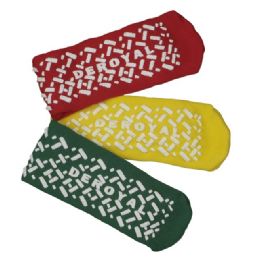
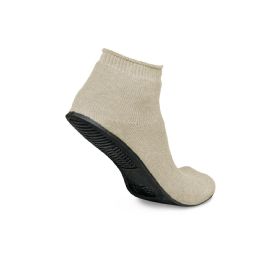
Why is fall prevention in medical facilities of such concern today?
According to the American Nurses Association (ANA), the “facts are undeniable”: Up to 50% of patients in hospitals are at risk of falling. Nearly half of those who do fall suffer an injury. Falls have large impacts on both patients and facilities, extending the average length of a hospital stay by 12.3 days, and increasing patient care costs by more than 60 percent.
Is it any wonder that every healthcare organization, and every healthcare worker, is focused today on strategies to reduce and prevent accidental injuries from falling? Preventing patient falls in clinical settings such as hospitals, nursing homes and other care facilities is best achieved through multidisciplinary teams. They work together to identify those at high risk for falls, and to develop strategies for falls prevention within the facility. Many such strategies are also useful at home.
What causes patient falls, or falls at home?
A fall is usually an unexpected event. A person comes to rest on the ground, floor or lower level (of a bleacher, for example). Generally, we think of someone falling from an upright position, but the term also describes the event of someone tumbling from a bed, a chair or wheelchair, or falling down some stairs. In any fall event, the risk of injury is high.
There are intrinsic risk factors associated with poor vision, impairment of balance or gait, or cognitive impairment. Such risk factors may be the result of injury, medical conditions, congenital conditions, or simply the result of aging. Some high-risk or contraindicated medications may lead to dizziness, which increases the risk of falls.
Medical conditions that may contribute to an individual’s risk of falling include arrhythmia, infection, orthostatic hypotension, focal or generalized muscular weakness, fainting, hypoglycemia, seizure and neuropathy.
Extrinsic factors that increase risk may include inappropriate footwear, ill-fitting clothing (such as trousers or a bathrobe that is too long), poor lighting, unsteady furniture or equipment, slippery or uneven surfaces, cluttered walkways and loose carpets or area rugs.
What fall prevention strategies are useful for medical facilities and also for home care?
The first step required is to determine the root cause of an individual’s propensity to fall, or someone’s “falling risk.” A multidisciplinary assessment is the indicated approach in hospitals, nursing homes and other long-term care facilities. Doctors, nurses, CNAs, physical and occupational therapists and other care providers observe an individual in different ways, all of which should be considered.
As part of their “falls prevention protocol” in medical facilities, patient status is often indicated visually so that health care providers can assess a patient’s risk potential to fall “at a glance.” This is accomplished through flagging the patient chart with colorful stickers, issuing colorful bracelets, affixing door signs or magnets, and other visual cues.
Many fall prevention strategies may be useful in both healthcare facilities and at home. Discuss these ideas with your healthcare provider or a physical or occupational therapist to determine the falls prevention strategy most appropriate for your situation.
• Visit the individual’s doctor to review general health, medical conditions, medications, history of falling, eye and ear disorders, and general comfort with walking.
• Keep moving! Work with medical and therapy professionals to design an appropriate exercise program. Exercises to strengthen legs and to improve balance are indicated, since a stronger gait and good balance lower the risk of falls.
• Ensure the individual wears properly fitting, sturdy, “sensible” shoes with nonslip soles, or well-fitting slippers with non-skid surfaces.
• Remove clutter from walkways and other traffic areas. There should be a clear path available to bathroom facilities, dining room and anywhere else the individual needs to navigate.
• Remove area rugs as they may create a tripping hazard. Remove electrical and phone cords that may be around walkways.
• Mitigate slippery surfaces by using non-slip strips, rubber non-slip bath mats and the like.
• Fix broken or uneven steps and walkways.
• Be on the lookout for kitchen spills, and wipe them up quickly.
• Use night-lights throughout the home to prevent falls at night. Keep living space brightly lit so that any remaining tripping hazards are easily seen.
• Despite your best efforts, recognize that falls are still possible. Look around and identify sharp furniture corners that could cause injury. Move the furniture, or cover the sharp corners with edge bumper guards.
• Ask your doctor for a referral to an occupational therapist, who can help devise fall-prevention strategies, and recommend appropriate assistive devices.
Rehabmart carries scores of products useful in preventing falls, and is continually adding more. Products range from non-skid slippers to fall prevention monitors and sensor pads. There are floor mats designed to soften falls that do occur. Wedge foam pommel cushions and “huggers” help with upper torso support and wheelchair safety.
Rehabmart is pleased to offer a vast selection of superior quality Fall Prevention products from renowned manufacturers that include Posey, DeRoyal, Medline, North Coast, Drive Medical, Independence Medical, Emergency Caller, Skil-Care and many other fine manufacturers.
Hulet Smith, OT
Rehabmart Co-Founder & CEO
nrb